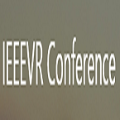Network visualizations are commonly used to analyze relationships in various contexts. To efficiently explore a network visualization, the user needs to quickly navigate to different parts of the network and analyze local details. Recent advancements in display and interaction technologies inspire new visions for improved visualization and interaction design. Past research into network design has identified some key benefits to visualizing networks in 3D versus 2D. However, little work has been done to study the impact of varying levels of embodied interaction on network analysis. We present a controlled user study that compared four environments featuring conditions and hardware that leveraged different amounts of embodiment and visual perception ranging from a 2D visualization desktop environment with a standard mouse to a 3D visualization virtual reality environment. We measured the accuracy, speed, perceived workload, and preferences of 20 participants as they completed three network analytic tasks, each of which required unique navigation and substantial effort. For the task that required participants to iterate over the entire visualization rather than focus on a specific area, we found that participants were more accurate using a VR and a trackball mouse than conventional desktop settings. From a workload perspective, VR was generally considered the least mentally demanding and least frustrating in two of our three tasks. It was also preferred and ranked as the most effective and visually appealing condition overall. However, using VR to compare two side-by-side networks was difficult, and it was similar to or slower than other conditions in two of the three tasks. Overall, the accuracy and workload advantages of conditions with greater embodiment in specific tasks suggest promising opportunities to create more effective environments in which to analyze network visualizations.
翻译:为了有效地探索网络可视化,用户需要快速导航到网络的不同部分,并分析当地细节。最近显示和互动技术的进步为改进可视化和互动设计带来了新的愿景。过去对网络设计的研究确定了将网络以3D对2D进行视觉化的一些关键好处。然而,在研究网络分析方面,没有做多少工作来研究不同程度的内含互动对网络分析的影响。我们进行了一项受控制的用户研究,比较了四个环境,这些环境的条件和硬件利用了从标准鼠标的2D可视化桌面环境到3D可视化虚拟现实环境等不同数量的化和视觉观点。我们测量了20名参与者在完成三项网络分析任务时的准确性、速度、感知工作量和喜好,每项任务都需要独特的导航和大量努力。对于需要参与者在整个可视化中进行渗透性互动的不同程度的影响,而不是对一个特定领域,我们发现参与者使用VR和跟踪球鼠标比常规桌面环境更精确。从工作量角度看,VR一般认为它比正常的准确性程度要低得多,而在总体的网络中,在三个任务中,在最接近性、最接近性的任务中,在最后两个层次上分析最困难和最难的方面,在三个任务中,在最接近于最难和最接近于最接近于最接近于最后的难度。





